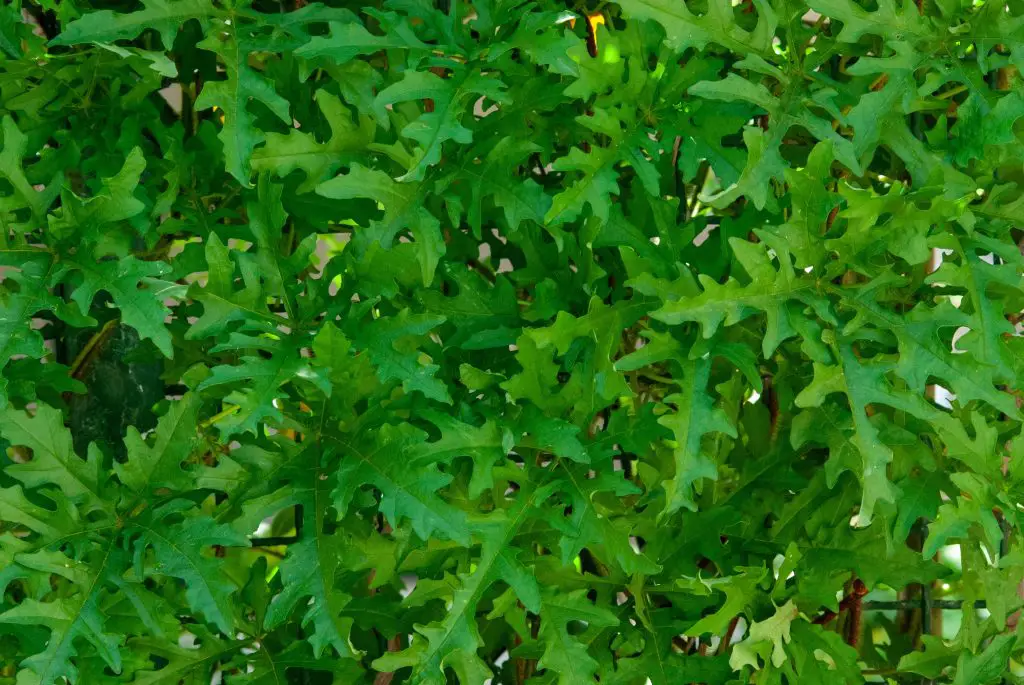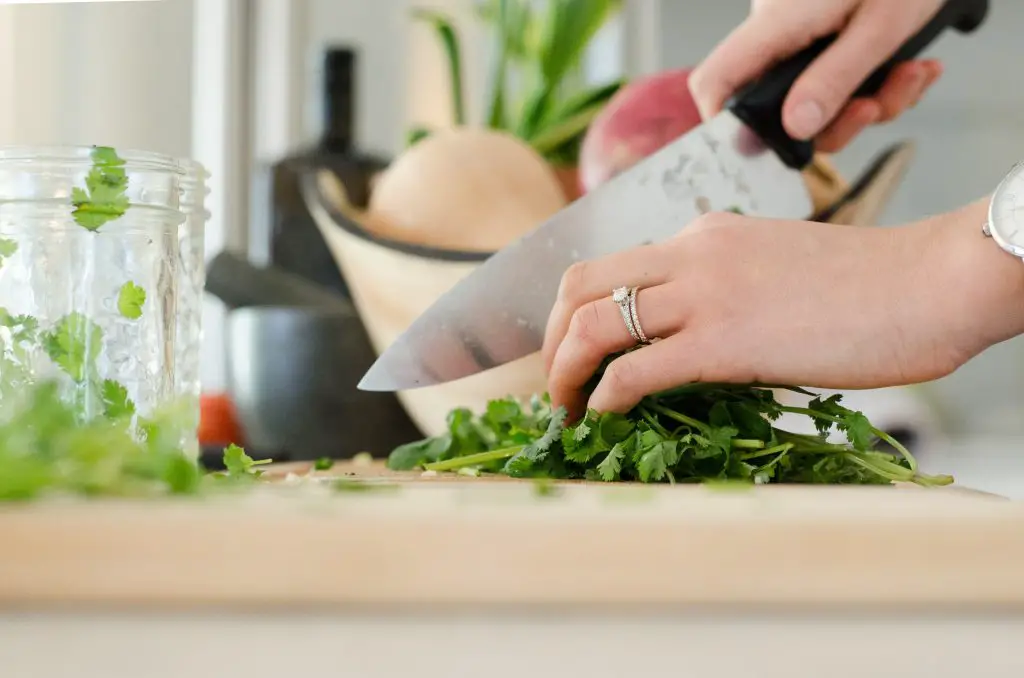Is Arugula A Type Of Lettuce? Arugula is an extremely popular type of leafy green that is commonly used in a similar way to lettuce in many fresh salads to add a little bit of spice and peppery flavor to them. However, is arugula a type of lettuce or is it something else entirely?
Arugula, which is also commonly known as rocket, is not related to traditional lettuce varieties such as Iceberg or Romaine lettuce. It is in fact a brassica and is more closely related to things such as broccoli, cauliflower, and brussels sprouts whereas the traditional lettuce varieties are actually from the daisy family.
The dead giveaway that arugula is actually from a different family can be seen in the shape of it seed and also the shape of the seedling leaves which first appear after the plant germinates. All members of the brassica family have a rounded seed that is similar to a mustard seed which is unsurprising given that mustard is also a brassica.
The other distinctive characteristic of brassicas is that they produce a clover-like seedling leaf which is later replaced by the true leaves of the plant as it matures.
However, despite these types of differences, there are several common characteristics associated with arugula and lettuce which do give the impression that they are more closely related than they really are.
What Is Common About Arugula And Lettuce?
As mentioned above both plants are used as leafy greens generally in fresh salads as such as they have generally a similar type of appearance in terms of color though the actual shape of the leaves is distinctly different arugula has lobed leaves at our kind of similar to maple leaves though the lobes are generally not as fat.
In terms of their growth habits, both plants perform best in cooler weather as both plants have a tendency to bolt to seed relatively quickly. This is particularly the case with arugula which is renowned for running to seed to extremely quickly in warmer weather. As a result of this most gardeners will not attempt to grow arugula in summer but instead will use it as a spring or autumn crop though it is also possible to grow in winter if the climate is relatively mild.

Another common feature of both plants is that once they approach the point where the plant is going to bolt the leaves become bitter in taste. However, in the case of arugula, which already has a somewhat bitter and peppery taste it amplifies what is already there whereas in the case of lettuce which has a relatively mild flavor it quickly becomes unpalatable.
To reduce the extent of the bitter flavor in arugula many chefs recommend massaging coconut oil and lemon juice into the leaves 30 minutes prior to eating.
How To Delay The Bolting Of Arugula And Lettuce
One of the most common problems associated with growing arugula and lettuce is that they have a tendency to bolt very quickly which means that you can quickly have crops to deteriorate to the point where they’re unpalatable. So what can be done to overcome this problem and delay the speed of bolting.
Bolting generally occurs when the plant is under stress which can be caused by factors such as heat or lack of water. To reduce the chances of the plants bolting it is important to regularly water them to ensure that the soil remains moist.
To aid in the retention of water in the soil it is also advisable to apply a layer of mulch typically 2 to 4 in thick. The second common issue that causes plants to bolt is simply that it is too hot. One of the tactics that I commonly used to reduce this is to plant at least part of my crop in shade in the height of summer. This typically will reduce the temperature that the plant experiences by 10 to 20 degrees which is significant.

How To Ensure A Continuous Supply Of Lettuce And Arugula
What I find is that I almost always have a period throughout the year where I no longer have any lettuce or arugula available for picking due to the plants bolting very rapidly. To overcome this issue it is necessary to have multiple crops of the plants growing at different stages to ensure that once one crop is finished the next one is ready to pick.
However, for many home gardeners being sufficiently organized to ensure that sowing occurs regularly is often problematic and results in gaps in the supply of lettuce or arugula.
To avoid this problem the approach that I normally take is to plant two full seed trays with lettuce and arugula at any given time. Once those seed trays have reached the point where they are ready to be planted out into the garden the next seed trays are planted out.
I find the system works really well because as the temperature increases the germination rate also increases which means that there is less time between sowings in hotter weather which is ideal for ensuring a continuous supply.
However, it is important to note that I generally only plant lettuce throughout the summer and then arugula and lettuce through the cooler months simply because arugula bolts too quickly in hot weather.

Tips To Reduce The Work Associated With Planting Lettuce Seed
Due to the need to regularly plant lettuce seeds and transplant them to maintain a continuous supply it is important to reduce the amount of work associated with growing the plants. There are a couple of methods that I have found to be really successful in reducing the work.
The first tip is to plant into seed trays that do not have any modular cells as this will avoid the need to plant individual plugs into the ground. I find it is much easier to have 5 or 6 rows of seeds in an open seed tray because they can be transferred much more quickly.
The second tip that I highly recommend is not to try and space the seeds perfectly simply drop them on the surface of the seed tray in rows, However it is important to sow them relatively thinly. This will generally only take a couple of minutes to complete the sowing.
It is important to note that lettuce seeds require light to be germinated so they are quite happy to just sit on the surface of the seed trays whereas arugula seeds do prefer to be buried in a shallow farrow though they will germinate if they are placed on the surface of the soil. If you want to create a furrow the quickest way to do it is to use an icy pole stick and run it across the surface of the soil.

Once the seedlings have come up and are ready to be planted into the garden there is a third tip that will accelerate the rate at which this can be done. Rather than trying to transfer individual plants or clumps of plants the easiest way to do this is to use a trowel to pick up part of a row or the entire thing and then place them directly into the ground.
This works best if you have already a pre-dug furrow that the plants can be placed in. This process will substantially speed up the transfer process and generally make it a quick and easy job to complete.
I hope you found this article useful and have great success growing arugula and lettuce in your garden. if you have any questions or comments please leave them in the section below.
Relevant Articles
Will Deer Eat Lettuce? And How To Stop Them
Can You Eat Lettuce After It Has Gone To Seed?
Is Radicchio A Lettuce Or Cabbage?
